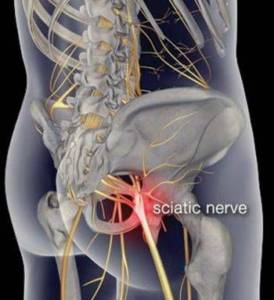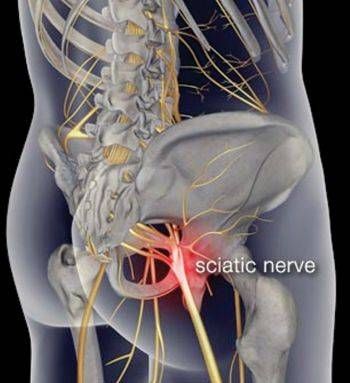Treating Low Back Pain and Sciatica Naturally
Sciatica usually starts with a herniated disk in your lower spine. The sciatic nerve is the longest nerve in your body. It starts in your lower back and splits to run through your hips, buttocks, legs and feet on both sides. Bone spurs (bony growth) and spinal stenosis (narrowing) can also put pressure on the sciatic nerve in the lower back. When that happens, it can cause a lot of problems all the way down the nerve. The most distinctive sign of sciatica is pain that radiates from your lower back into the back or side of the legs. It can range from a mild ache to sharp, severe pain.
CAUSES:
- Lumbar spinal stenosis (narrowing of the spinal canal in the lower back)
- Degenerative disc disease (breakdown of discs)
- Spondylolisthesis (a condition in which one vertebra slips forward over another one)
- Pregnancy
- Muscle spasm in the back or the buttocks
- Misalignment of vertebra
- Nerve Compression
- Wearing high heels
SYMPTOMS:
- Lower back pain
- Pain in the rear or leg that is worse when sitting
- Hip pain
- Burning or tingling down the leg
- Weakness, numbness, or difficulty moving the leg or foot
- A constant pain on one side of the buttock
- A shooting pain that makes it difficult to stand up
TREATMENT:
At Elite Pain Care we provide a total body treatment plan that consists of 3 phases. In the 1st we focus on eliminating your pain and alleviating your symptoms. In the 2nd phase of your treatment plan we focus on rehabilitation with physical therapy to increase strength and flexibility. In the 3rd phase of treatment we provide overall wellness. Wellness care provides patients with preventative care and includes personal fitness training, nutritional counseling, postural improvements as well as stress and anxiety management.
Treatment plans include: Spina Adjustments, which aids in the proper alignment of vertebrae in the spine and remove pressure on nerve roots alleviating pain in the neck. Muscle stimulation to increase blood flow, enable faster recovery of muscle soreness, clears lactic acid and increases fresh oxygen and nutrients. Soft tissue therapy increases range of motion, increases flexibility, and it provides you with proper joint function. Physical therapy is a rehabilitation phase of your treatment where our goal is to increase strength, flexibility and range of motion of your joint.
Â
Â



